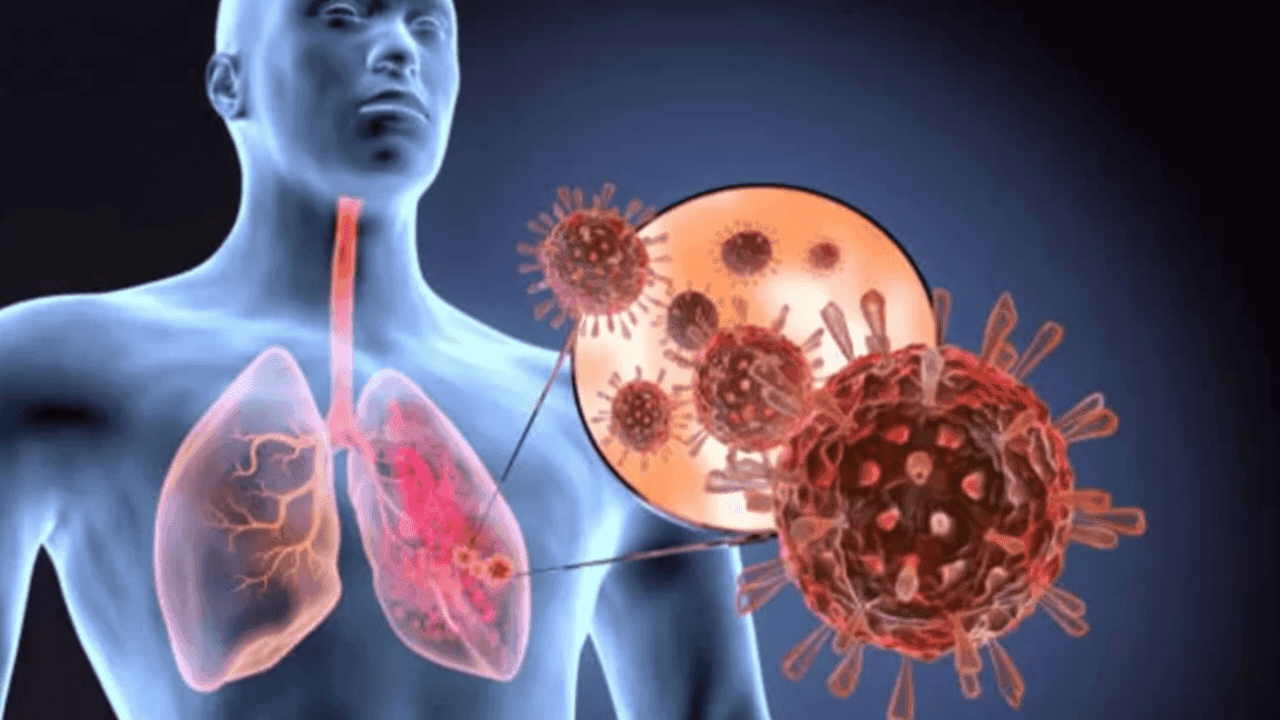ARDS or acute respiratory distress syndrome is a severe respiratory disorder caused by fluid buildup in the air sacs (alveoli) of the lungs. ARDS is an emergency condition that can cause death if not treated immediately.
ARDS is often caused by critical illnesses, such as sepsis or severe pneumonia. One of the causes of pneumonia that is currently a pandemic is the Corona virus (COVID-19). According to several studies, some COVID-19 patients can experience ARDS during the course of their illness.
ARDS can develop over a few days or get worse quickly. The main symptom is severe shortness of breath.
Causes of Acute Respiratory Distress Syndrome
ARDS is caused by fluid leaking from the capillaries in the lungs into the alveoli. Alveoli are collections of air sacs in the lungs that function as a place for the exchange of oxygen and carbon dioxide.
Normally, the membranes that line the capillaries keep fluid inside the blood vessels. However, in people with ARDS, injury or severe illness damages these protective membranes, allowing fluid to leak into the alveoli.
The accumulation of fluid makes the lungs unable to fill with air, so that the oxygen supply to the bloodstream and body is reduced. This lack of oxygen supply can cause organ function to stop, including the brain and kidneys. If left untreated, this condition will threaten the life of the sufferer.
Some conditions and diseases that can cause ARDS are:
- Sepsis
- Injuries to the head or chest, for example due to a blow or accident
- Pneumonia
- Burns
- Exposure to hazardous substances, such as concentrated smoke or chemical vapors
- Choking on foreign object
- Sink
- Transfusion of very large amounts of blood or transfusion related lung injury (TRALI)
- Pancreatitis
Risk factors for a cute respiratory distress syndrome
ARDS is usually a complication of certain conditions or diseases. However, there are several factors that can increase a person’s risk of experiencing ARDS, namely:
- Aged over 65 years
- Smoke
- Having an addiction to alcohol
- Suffering from chronic lung disease
- Suffering from a genetic disorder
- Experiencing obesity
- Experiencing an overdose of certain medications
Symptoms of Acute Respiratory Distress Syndrome
The symptoms of ARDS that arise in each sufferer can vary, depending on the cause, severity, and history of the patient’s illness, such as heart disease or lung disease.
Some symptoms and signs that can appear in ARDS sufferers are:
- Short and rapid breathing
- Hard to breathe
- Low blood pressure (hypotension)
- The body feels very tired
- Excessive cold sweats
- Bluish lips or nails (cyanosis)
- Chest pain
- Increased heart rate (tachycardia)
- Cough
- Fever
- Headache or dizziness
- Confused
- Loss of consciousness
When to see a doctor
Seek medical help immediately if you experience shortness of breath, especially if you are suffering from the diseases mentioned above. You are also advised to seek medical help immediately if you see friends or family members experiencing symptoms of ARDS.
Diagnosis of Acute Respiratory Distress Syndrome
The doctor will ask about the patient’s symptoms and medical history, then perform a physical examination. During the physical examination, the doctor will check vital signs, such as respiratory rate or frequency, blood pressure, pulse, body temperature, and bluish color of the lips and nails, accompanied by a physical examination of the chest wall .
To confirm the diagnosis, the doctor will perform a number of other examinations, such as:
- Blood tests , to measure the level of oxygen in the blood (blood gas analysis) and check for anemia or infection.
- Chest X-ray , to see the location and amount of fluid buildup in the lungs, as well as detect possible heart enlargement.
- CT scan , to see the condition of the lungs and heart in more detailEchocardiography (heart ultrasound), to assess the condition and structure of the heart and detect heart dysfunction.
- Electrocardiogram (ECG), to determine the electrical activity of the heart and rule out the possibility that symptoms are caused by heart disease.
- Culture or examination of sputum samples, to detect bacteria or other microorganisms that cause infection.
- A biopsy , or taking a tissue sample from the lung, to rule out the possibility that the symptoms are caused by a lung disease other than ARDS.
Treatment of Acute Respiratory Distress Syndrome
ARDS treatment aims to increase oxygen levels in the blood so that the patient’s organs can function again and avoid organ failure. Other goals of ARDS treatment are to relieve symptoms and prevent complications.
ARDS patients will usually be treated in the intensive care unit (ICU). Some of the treatment methods that will be given in the hospital are:
- Providing additional oxygen via nasal tube or mask for patients with mild symptoms
- Installation of breathing aids and ventilators to help deliver oxygen to the lungs.
- Giving fluids through an IV to control the amount of fluid in the body
- Providing nutritional intake using a nasogastric tube that is inserted through the nose
- Administration of antibiotics to prevent and treat infections
- Administration of blood thinners to prevent blood clots in the legs and lungs (pulmonary embolism)
- Administration of painkillers, drugs to reduce stomach acid, and sedatives
For ARDS patients who are recovering, pulmonary rehabilitation is recommended. This action aims to strengthen the respiratory system and increase lung capacity.
Complications of Acute Respiratory Distress Syndrome
People with ARDS can experience complications, either due to ARDS itself or due to side effects of its treatment. Some of these complications are:
- DVT (deep vein thrombosis) or blood clots in the deep veins in the legs due to lying down continuously
- Kidney failure due to impaired oxygen flow to the kidneys
- Pneumothorax or accumulation of air in the pleural membrane, which generally occurs due to air pressure from the use of a ventilator.
- Lung infection due to germs entering the lungs through a breathing apparatus
- Pulmonary fibrosis or the formation of scar tissue in the lungs that makes it more difficult for the lungs to supply oxygen to the blood
- Brain damage, due to lack of oxygen flow to the brain
- Coma
- Death
In addition to the above complications, ARDS sufferers who recover can experience long-term health problems, such as:
- Respiratory disorders, such as shortness of breath, so that patients require long-term oxygen assistance.
- Disorders of thinking and memory due to brain damage
- Muscle weakness and atrophy due to prolonged immobilization (in patients who have to lie down for long periods of time)
- Depression
Prevention of Acute Respiratory Distress Syndrome
There are several things that can be done to reduce the risk of ARDS, namely:
- Stop smoking and avoid exposure to cigarette smoke
- Do not consume alcoholic beverages
- Undergoing flu immunization every year and PCV immunization every 5 years to reduce the risk of developing lung infections.
- Implementing clean and healthy living behavior (PHBS)
- Be careful when driving and always wear a seat belt or helmet.
Source :
Han, W. et al. (2021). A Systematic review for Effective Preventive Public Education of Respiratory Infection. International Journal of Environmental Research and Public Health, 18(8), pp. 3927.
Rahman, S., & Bahar, T. (2020). COVID-19: The New Threat. International Journal of Infection, 7(1), pp. 1–6.
Wu, C. et al. (2020). Risk Factors Associated with Acute Respiratory Distress Syndrome and Death in Patients with Coronavirus Disease 2019 Pneumonia in Wuhan, China. JAMA Internal Medicine, 180(7), pp. 934–43.
Lipps, K., Bharat, A., & James, W. (2019). Lung Biopsy in Patients with Acute Respiratory Distress Syndrome Supported on Extracorporeal Membrane Oxygenation: A 2 Year Experience. ASAIO Journal (American Society for Artificial Internal Organs, 65(8), pp. e92.
Metheny, N. et al. (2019). A Review of Guidelines to Distinguish Between Gastric and Pulmonary Placement of Nasogastric Tubes. Heart & Lung, 48 ( 3), pp. 226–35
.
et al. (2017). Incidence and Outcomes of Acute Respiratory Distress Syndrome in Patients with Acute Pancreatitis
(SARI) when COVID-19 Disease is Suspected
Nationally Institute of Health (2022). National Heart, Lung and Blood Institute. What Is Acute Respiratory Distress Syndrome?
Cleveland Clinic (2020). Health Essentials. Here's the Damage Coronavirus (COVID-19) Can Do to Your Lungs.
Mayo Clinic (2020). Diseases & Conditions. ARDS.
Allen, S. Healthline (2022). Understanding Acute Respiratory Distress Syndrome (ARDS).
Hecht, M. Healthline (2018). The Alveoli in Your Lungs.
Miller, K. WebMD (2021). Acute Respiratory Distress Syndrome (ARDS).
Stöppler, M. MedicineNet (2019). ARDS (Acute Respiratory Distress Syndrome): Symptoms & Signs.


Hello!
Good cheer to all on this beautiful day!!!!!
Good luck 🙂